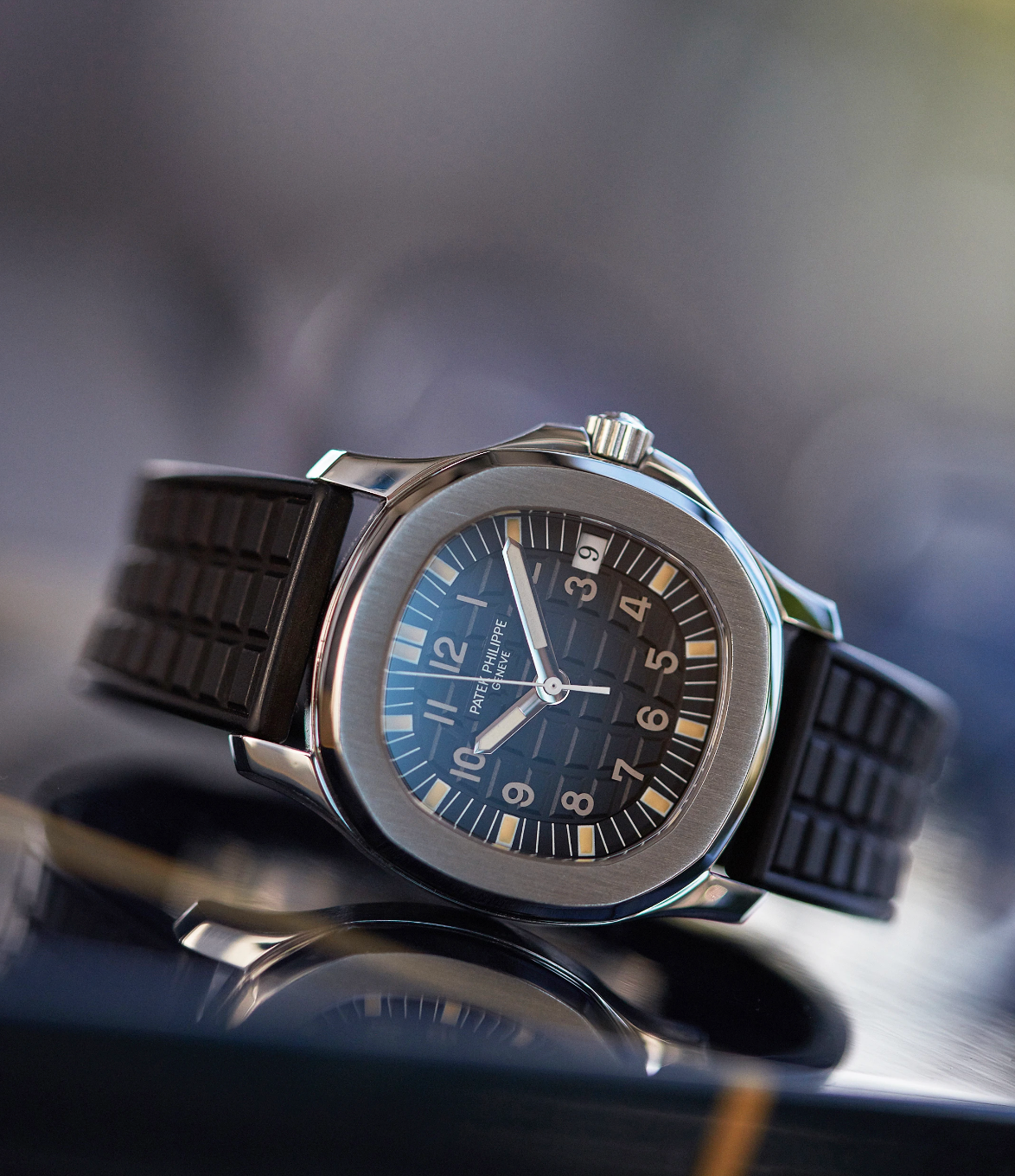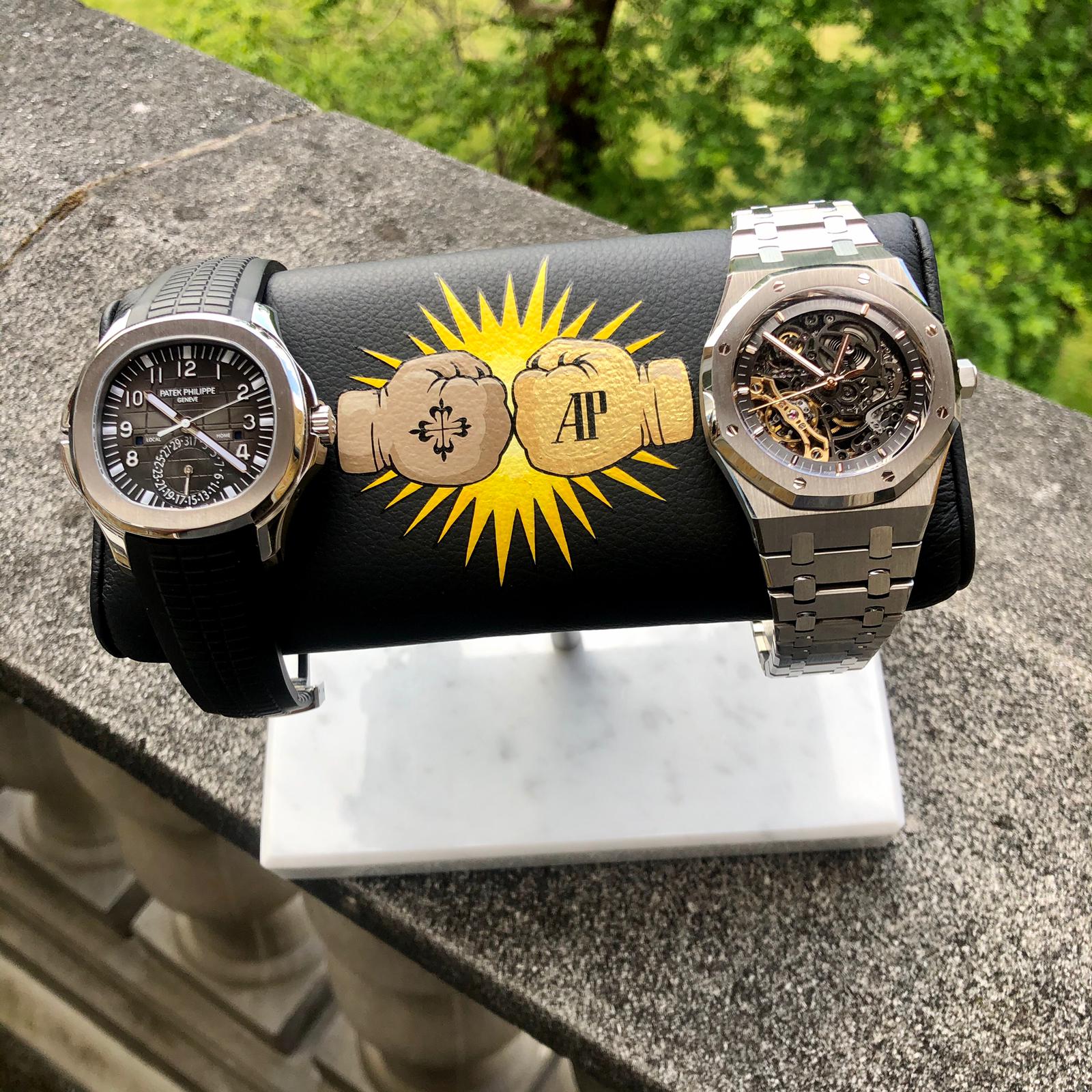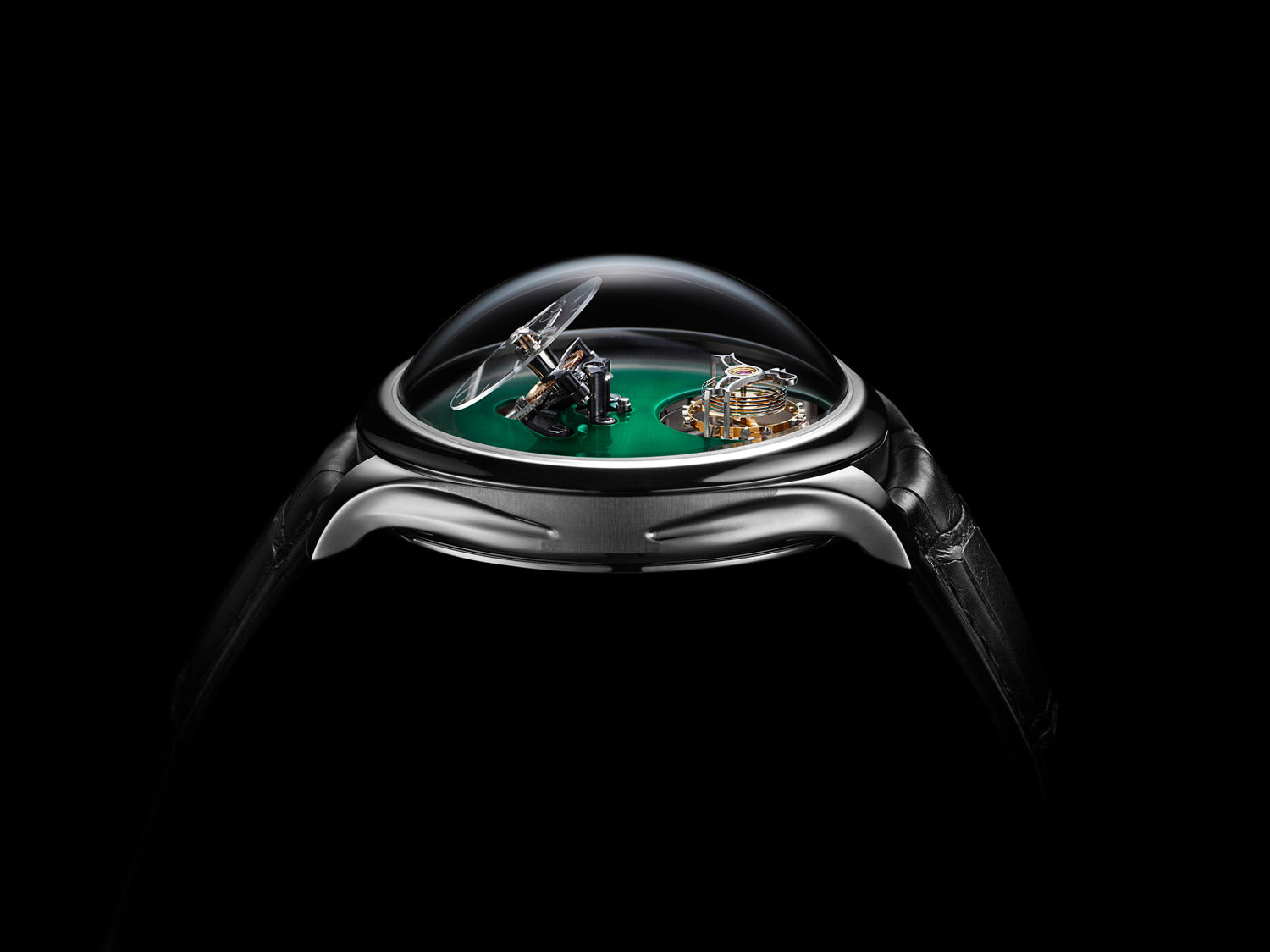
Is Patek Philippe's Aquanaut a modern icon?
The History of the Aquanaut
Released in 1997 during the midst of the .com bubble, the Patek Philippe Aquanaut was the brand's attempt to expand into a new market segment by appealing to a younger newly-minted wealthy clientele. Bearing a strong resemblance to the Nautilus, the Aquanaut divided opinion amongst collectors. With its release as a youthful luxury sports watch echoing that of the Nautilus in 1976, its simpler case, "tropical" rubber strap and smaller 35.6mm diameter, the Aquanaut was looked upon as a kind of Nautilus Junior. This comparison was somewhat justified; however, as the Aquanaut's bezel is similar to the Nautilus', with just rounded over edges. The so-called "Tropical" rubber strap was also a point of contention as the Aquanaut was the first watch from Patek to have one. As the bracelet could not be physically integrated into the case, Patek mirrored the dial's tapestry design onto the rubber to give the whole watch a sense of continuation. Image source: acollectedman.com
Image source: acollectedman.com
In 2007 Patek revealed a modernised version of the Aquanaut at Baselworld. With its larger 40mm case, contoured strap with a new deployment clasp and fresh dial, the Aquanaut as we know it today was born. The Nautilus-inspired Aquanaut DNA remained largely untouched; however, with the case still its octagonal shape - just with smoother lines. Speaking of smoother lines, the dial's tapestry detailing was made more discreet. Various other small changes were made, such as numeral sizing and such. By far the most significant change, however, was the alteration made to the Tropical strap. While the design changed slightly to mirror the change made to the dial's texture, the real difference was made when Patek integrated it into the case as much as possible by bringing it right up to the case. This allowed the Tropical to be as close to an integrated rubber bracelet as one could get. Since 2007 Patek Philippe has released three versions of the Aquanaut that we find particularly cool. The Advanced Research, the Travel Time and the Chronograph.
Aquanaut Travel Time Released in 2012 the Aquanaut Travel Time was the first Aquanaut to feature a complication. It houses a list of practical functions, the main one being a second time zone displayed through its skeletonised second hour hand. A pair of apertures are also positioned at 3 and 9 o clock on the dial that indicates whether the times shown are either day or night times. This creates an incredibly functional travelling watch as both hour hands are 12-hour hands, and therefore no mental arithmetic has to be performed. The second hour hand can also be hidden under the local time hour hand when the wearer isn't travelling to increase the wearability of the piece even further.
Released in 2012 the Aquanaut Travel Time was the first Aquanaut to feature a complication. It houses a list of practical functions, the main one being a second time zone displayed through its skeletonised second hour hand. A pair of apertures are also positioned at 3 and 9 o clock on the dial that indicates whether the times shown are either day or night times. This creates an incredibly functional travelling watch as both hour hands are 12-hour hands, and therefore no mental arithmetic has to be performed. The second hour hand can also be hidden under the local time hour hand when the wearer isn't travelling to increase the wearability of the piece even further.
The Advanced Research Program
Our watch stand from the Classic collection.
Patek Philippe's Advanced Research Program was launched after they had been a part of the Centre Suisse d'Electronique et Microtechnique (CSEM). The CSEM was a consortium of brands that sought to better understand the use of silicone components in watches. The first Patek Philippe component that was to come from the Advanced Research Program was an escape wheel made of a proprietary silicone dioxide known as Silinvar. This new material's benefits were tenfold. Its increased hardness and smoothness reduced the need for lubricants, and the parts could be machined to a higher level of precision.
After a 6-year hiatus from their Advanced Research Program Patek suddenly brought it to the Aquanaut in 2017 in the form of a limited-edition version with just 500 pieces. While the return of the Advanced Research Program was a surprise in and of itself, it was particularly surprising to see it in a watch that wasn't an annual or perpetual calendar with a round dial. It's also the first Advanced Research watch to have an innovation present in a material other than silicon. This is the 'compliant mechanism' which is used to operate the GMT indication. The pushers at 8 and 10 move the GMT hand up and down an hour, respectively, via the flexible steel 'compliant mechanism' that is on display through the semi-skeletonised dial. This mechanism greatly reduces the number of parts required to do the same job from 37 to just 12, meaning there is less friction involved, a reduced need for lubricants and greater longevity overall.
The next innovation was a redesign of the Spiromax balance spring. Patek gave the spring a new shape in the form of curving the inside of the spring. This creates symmetry between the innermost curve and the outermost curve, which allows the spring's centre of gravity to be aligned with the balance wheel. With this relatively small innovation, Patek has been able to increase the stability of the movement and get the spec as low as -1/+2 seconds a day.
Aquanaut Chronograph Released a year after the Advanced Research in 2018, the Aquanaut Chronograph serves to diversify the entire Aquanaut range by adding the eponymous complication that so many watch lovers seem to enjoy. Powered by a self-winding flyback chronograph movement that it shares with the 5980 Nautilus, the 60-minute chronograph isn't a pioneering piece of engineering, but its a fantastic addition to the Aquanaut line-up. It is nice to see that Patek are happy to continue making watches that are fashionable and fill gaps in their product line as opposed to continually trying to outdo themselves.
Released a year after the Advanced Research in 2018, the Aquanaut Chronograph serves to diversify the entire Aquanaut range by adding the eponymous complication that so many watch lovers seem to enjoy. Powered by a self-winding flyback chronograph movement that it shares with the 5980 Nautilus, the 60-minute chronograph isn't a pioneering piece of engineering, but its a fantastic addition to the Aquanaut line-up. It is nice to see that Patek are happy to continue making watches that are fashionable and fill gaps in their product line as opposed to continually trying to outdo themselves.
See the Classic collection here.
So is the Aquanaut an Icon?
With a lot of high-end stainless-steel watches finding themselves placed upon higher and higher pedestals by collectors, it has only been fair that the Aquanaut would become as revered as it has in recent years. While it is of course still a relatively young watch compared to the Nautilus, it must be said that it has very effectively carved its own niche out in the market. It's stylistic design, and fashionable offerings have kept the Aquanaut a desirable piece of timekeeping equipment. With that in mind, it's safe to say that the Aquanaut will be as widely sought-after for years to come.

Hand-painted watch stand from our Maison Gris collection.


Leave a comment
This site is protected by hCaptcha and the hCaptcha Privacy Policy and Terms of Service apply.